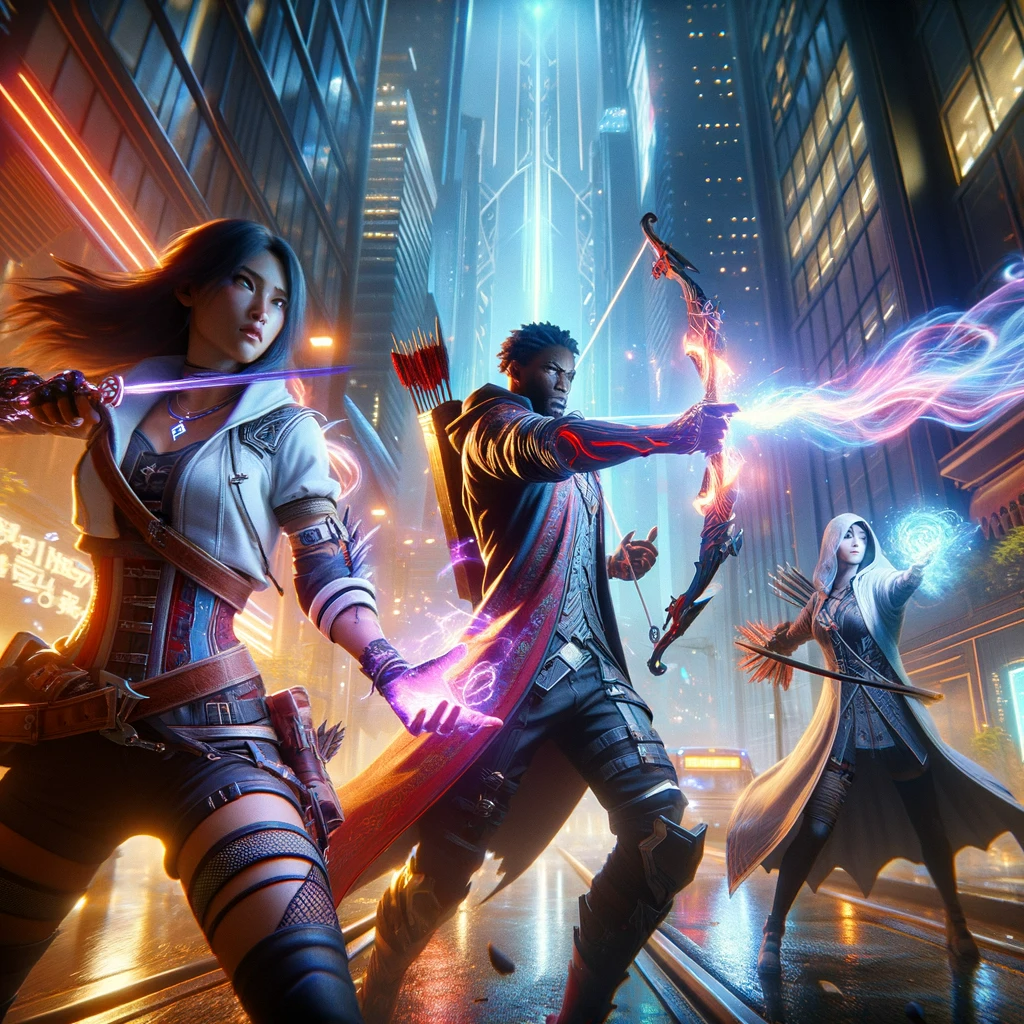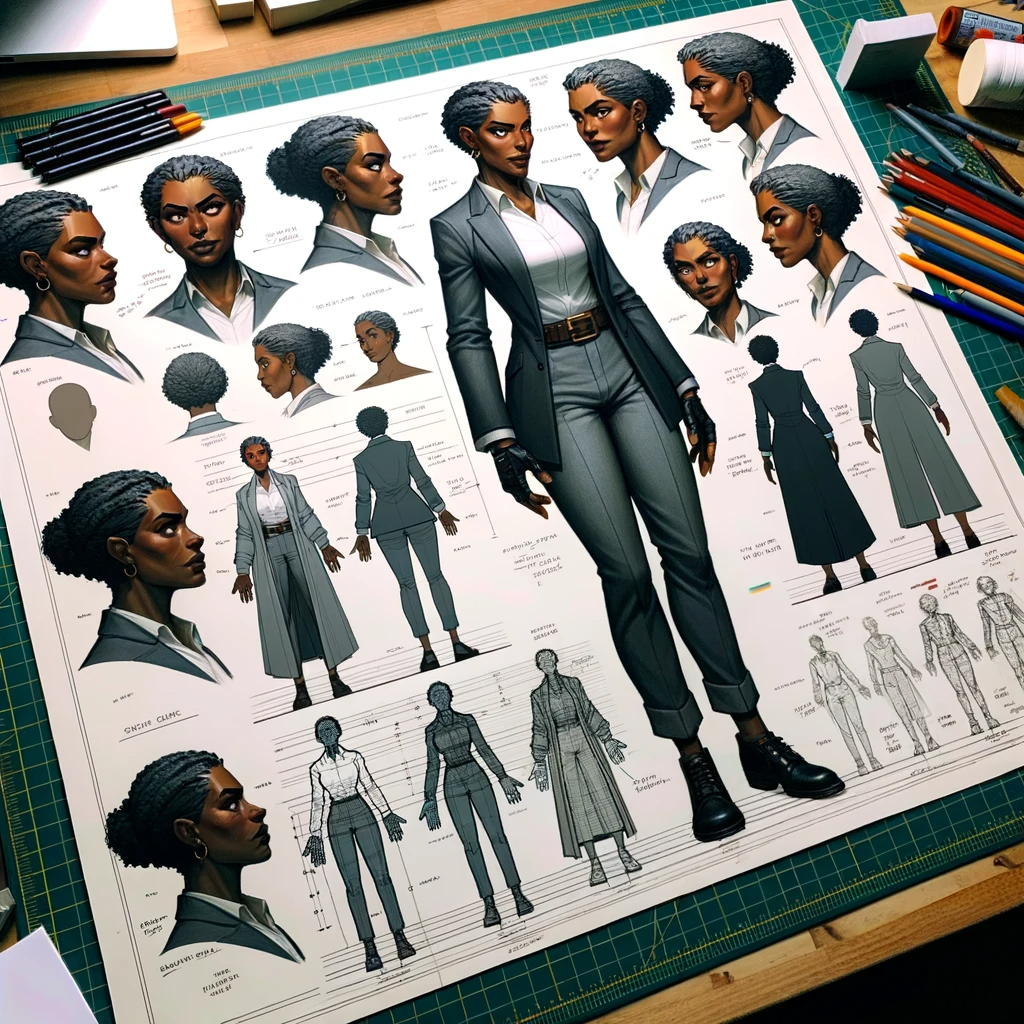3D Character Design, Game Art, and Publishing: Full Guide
3D character design, game art, and publishing form a complex landscape, but with the right tools and knowledge, anyone can navigate it successfully. Whether you’re an artist, a designer, or someone looking to understand more about the industry, this guide provides a solid foundation to build upon.
But let’s start with the basics. Game design studios holds a pivotal role in the gaming world, shaping how players interact with and perceive a game.
The Easiest Way to Create 3D Characters
There are numerous tools available that cater to the needs of both beginners and professionals in the 3D design world. You can read about different ways for creating 3d charactes here.
Blender, for example, is a powerful and free tool that provides a wide array of functionalities for 3D modeling, texturing, and animation.
For those who are new to 3D design, TinkerCAD offers a more user-friendly and straightforward platform to kickstart your design journey.
For professionals or those looking to take their skills to the next level, software like Autodesk Maya or ZBrush provides advanced features and greater control over the design process. These tools, while more complex, offer a comprehensive set of options for detailed character modeling and animation.
User-Friendly and Beginner-Friendly Approaches
Embarking on the journey of 3D character design requires patience and practice. There are plenty of tutorials and online communities, such as forums and social media groups, where beginners can learn and seek advice.
Engaging with these resources can significantly improve your understanding and skills in 3D character design.
Consistent practice is key to mastering 3D character creation. Start with simple projects and gradually move to more complex designs as you become more comfortable with the tools and processes.
The Role of Creativity and Customization
Creativity plays a vital role in 3D character design. Don’t be afraid to experiment with different styles, textures, and colors. The more you play around with various options, the more unique and interesting your characters will become.
Customization is what makes your character stand out. Pay attention to details and think about how your character’s traits and appearance can enhance their role and presence in the game or animation.
Creating 3D characters is an exciting and rewarding skill to develop. With the right tools, a willingness to learn, and a touch of creativity, anyone can master the art of 3D character design. Remember, the journey might be challenging at times, but the results are well worth the effort.
Pricing Strategies for Character Design
Let’s talk about Factors Influencing Character Design Pricing. Information inspired from this article
Experience and Skill Level: The experience and skill level of the designer plays a significant role in pricing. Experienced designers, having honed their skills over years, tend to charge more for their services. They bring a wealth of knowledge and expertise to the table, ensuring high-quality results.
Complexity of the Design: The complexity of the character design also affects the pricing. Simple designs require less time and resources, resulting in lower costs. On the other hand, intricate designs with detailed features demand more effort, justifying a higher price point.
Understanding the current market rates for character design is vital. Researching what other designers charge for similar services can provide a benchmark, helping to set competitive and fair prices.
Considering the client's budget is another essential aspect. Transparent communication about budget constraints and expectations ensures a smoother negotiation process, leading to a mutually beneficial agreement.
Tips for Designers and Clients
Designers should clearly define what their services include. Providing a detailed breakdown of the process, from initial sketches to the final product, helps in setting clear expectations and justifying the pricing.
Clients should understand the value brought by a professional character designer. Investing in quality design enhances the overall appeal of the project, contributing to its success.
Establishing a fair and balanced pricing strategy is key to a successful character design venture. By considering the various factors that influence pricing, adhering to industry standards, and following practical tips, both designers and clients can foster a positive and productive working relationship.
How 3D Models are Made in Games
Creating 3D models for games is a fascinating process that combines art, design, and technology.
So, when we talk about this, 3D modeling is the process of creating three-dimensional objects using specialized software. In games, these objects can be characters, scenery, or any other elements that players interact with or observe. You can read more about it in this guide
3D artists play a crucial role in game development. They are responsible for bringing ideas to life, ensuring that every model fits the game’s style and enhances the overall player experience.
The 3D Modeling Process in Games
Before any modeling begins, artists and developers must decide what needs to be created. Concept art is often used to visualize the final product and serve as a reference throughout the modeling process.
The next step is to create the mesh, which is the 3D object’s skeleton. Artists use points in 3D space, connected by lines and faces, to form the shape of the object.
Once the mesh is complete, artists add textures and materials to give the object color and detail. This step is vital for making the model look realistic or stylized, depending on the game’s aesthetic.
If the model needs to move, artists then rig it by adding a skeleton that can be animated. This process is essential for characters and other dynamic elements in the game.
Selecting the right software depends on the project’s requirements and the artist’s preference. Some tools may be better suited for certain types of modeling or offer a more user-friendly interface.
Best Practices and Tips
3D modeling is a skill that requires constant learning and practice. Artists should stay updated with the latest software updates and industry trends to enhance their skills.
In games, it’s crucial to optimize 3D models to ensure they run smoothly. This means finding the right balance between detail and performance, considering the game’s platform and target audience.
Mastering 3D modeling is a journey that combines creativity, technical skills, and a deep understanding of the gaming world. By following best practices, continuously learning, and applying the right techniques, artists and developers can create stunning 3D models that enrich the gaming experience.
Character Model Sheets
Character model sheets are comprehensive visual guides created by artists to represent a character from various angles and poses. These sheets ensure that everyone involved in the creation process has a clear and consistent reference for the character's appearance.
A typical character model sheet includes front, side, and back views of the character, as well as close-ups of important features and expressions. This ensures that every detail is captured and can be replicated accurately.
The Importance of Character Model Sheets - is that one of the main functions of character model sheets is to maintain consistency in a character's appearance, no matter who works on it. This is especially important in large projects where multiple artists may be involved.
Character model sheets help streamline the production process, as they provide a ready reference for artists to use. This reduces the time spent on revisions and ensures a uniform look for the character throughout the project.
Regarding Creating Your Own Character Model Sheets - even beginners can start creating their own character model sheets by focusing on the basic views and expressions. It’s important to start simple and gradually add more details as needed.
Examining model sheets from existing projects can provide valuable insights into how professionals create their character guides. Pay attention to the level of detail and the views that are included.
For those who are just starting out, using templates can be a helpful way to get accustomed to creating character model sheets. There are various templates available online that can serve as a starting point.
Crafting Female Horror Characters
In the realm of horror, female characters hold a unique and vital role. This extensive guide delves into the challenges, considerations, and nuances of creating female characters in horror settings. We will explore character traits, backstories, design elements, and provide examples from popular horror games.
See the TOP of female characters in another article
Challenges and Considerations in Designing Female Horror Characters
Crafting female characters in horror demands a thoughtful approach. It’s important to consider how these characters contribute to the narrative and how their portrayal impacts the audience’s perception.
A common pitfall in horror is falling into stereotypes, especially with female characters. Strive for depth and complexity to create characters that resonate and feel authentic.
Focus on developing well-rounded traits and a strong personality. Consider how these traits influence the character’s reactions and decisions in the face of horror.
A character’s backstory is crucial. It adds layers to their personality and helps in creating a connection with the audience. Ensure that the backstory is relevant and adds value to the overall narrative.
Design Elements and Aesthetics Horror Characters
Pay close attention to the character's visual design. It should reflect their personality, background, and role in the story. Ensure consistency in their appearance throughout.
Clothing and accessories are more than just visual elements; they can tell a story about the character's past, personality, or current state of mind. Choose these elements carefully.
Creating female characters in horror is a delicate balance. It requires attention to detail, an understanding of the unique challenges, and a commitment to avoiding stereotypes. By focusing on character traits, backstories, and design elements, and learning from existing examples, you can craft female horror characters that are compelling, relatable, and integral to the narrative.







